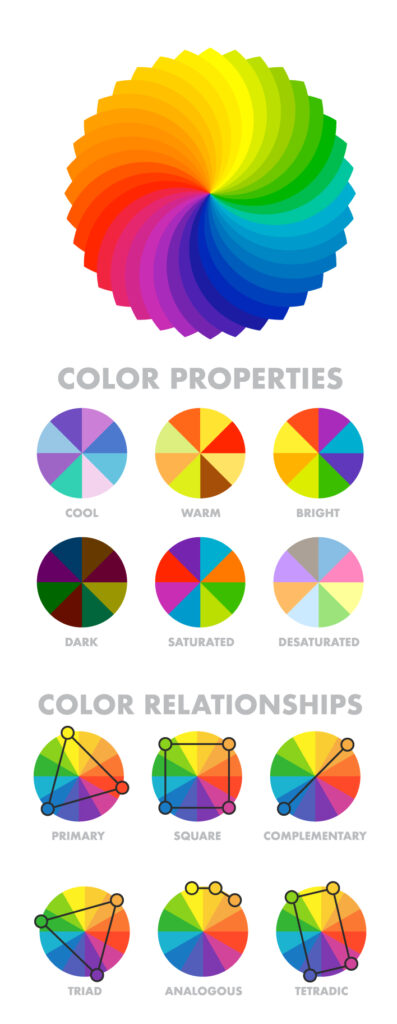Social media marketing is the use of social media platforms and websites to promote a product or service. Although e-marketing and digital marketing are still dominant in academia, social media marketing is becoming more popular among practitioners and researchers.
Social media marketing involves using social media platforms like Facebook, Instagram, Twitter, LinkedIn, etc. to reach a wider audience and communicate brand values, products & services.
Best practices of social media marketing help businesses with an opportunity to portray their brands to the customer and drive traffic back to their website. Social media can also help you generate leads and in turn sales along with increasing your brand awareness among customers.
Thus in modern times, social media marketing is a powerful tool for businesses of all sizes to reach prospective customers. Dont miss out the opportunity. Best practices in social media marketing can bring remarkable success to your business.
1. Identify your audience: It is a big mistake, trying to reach everyone.
Understand and organize your target audience, it will help you send the right message to the right people and help you meet your marketing goals effectively.
The target audience is a group of individuals that can be identified based on demographics such as age, job title, income level, etc. For a business, the social media target audience is the people who are most likely to be interested in your products or services.
To begin with, identify your target audience. Like, who these people are: should be based on the audience data you already have and from your market research. Compiling data from your old customer base, and getting social media analytical tools helps to compile new customer data and always have a check on your competition. This will help you analyze the posts and content they are placing online and are getting what kind of response.
Best strategies for Social Media Marketing

In the modern world, the market is too disruptive, and customers are confused, anxious, and lazy, they need everything and anything on the click of their mobiles. Almost 50% of Indias’s population is Millenials and Gen Z. Thus understanding their consumer behavior is very important. Gen Z and millennials both are upturning business expectations.
They expect accurate inventory information, good value-for-money products, and a wide range of choices for shopping. They appreciate innovation, to empower them to engage with the brand on their own terms. They want direct tailored made products for their individual self, so as to co-create an experience that is uniquely their own. To purchase the surveys identified product choice, availability, convenience, and values are top priorities when deciding how & where to make purchases.
Best strategies for Social Media Marketing
2. Define your goals & KPIs: To be successful in social media marketing one has to create goals that will appreciate your efforts. You can opt for different strategies to achieve your goal. We recommend using a SMART goal strategy. SMART goals give you a starting point, as well as a means to check in and make changes as needed from time to time. Always remember strategies need to be flexible enough to incorporate the changes.
Best strategies for Social Media Marketing
What is a SMART Strategy?
SMART stands for:
S: Specific
In order for a goal to be achievable, it needs to be specific. A specific goal answers the following questions:
If you get the answers to these questions then, First step of a SMART goal is achieved.
M: Measurable
Quantifying your goals (that is, making sure they can be measured in may be a specific time/ date/ hours/ etc) makes it very easy to track your marketing activity progress and know when it will be half or fully achieved.
A: Achievable
Goals should be realistic — not something haphazard drafted to work on. Ask yourself and involve our team to measure if these objectives are reasonable and can be accomplished in the specified time.
R: Relevant
Here you need to think about the future and the big picture. Why are you setting up these goals? Is it something relevant to the company’s long-term/short-term planning?
T: Timely
Time is a crucial factor, if we can not achieve goals in a stipulated time period it is a waste. It has no relevance. Thus time-bound strategies are required in order to nake it effective.
It is best practice to set goals using the SMART framework. This can help you succeed in setting and attaining goals in the best possible way and achieving all types of goals, no matter how large or small.
Best strategies for Social Media Marketing
Best strategies for Social Media Marketing


What is a SMART Strategy?
SMART stands for:
S: Specific
In order for a goal to be achievable, it needs to be specific. A specific goal answers the following questions:
If you get the answers to these questions then, First step of a SMART goal is achieved.
M: Measurable
Quantifying your goals (that is, making sure they can be measured in may be a specific time/ date/ hours/ etc) makes it very easy to track your marketing activity progress and know when it will be half or fully achieved.
A: Achievable
Goals should be realistic — not something haphazard drafted to work on. Ask yourself and involve our team to measure if these objectives are reasonable and can be accomplished in the specified time.
R: Relevant
Here you need to think about the future and the big picture. Why are you setting up these goals? Is it something relevant to the company’s long-term/short-term planning?
T: Timely
Time is a crucial factor, if we can not achieve goals in a stipulated time period it is a waste. It has no relevance. Thus time-bound strategies are required in order to nake it effective.
It is best practice to set goals using the SMART framework. This can help you succeed in setting and attaining goals in the best possible way and achieving all types of goals, no matter how large or small.
Best strategies for Social Media Marketing
Best strategies for Social Media Marketing

3. Allocate your resources for social media wisely: Social media management requires unique skills like:
If you have means hire an expert for social media, if not invest in advertisements on social platforms, which can boost brand awareness and expand reach.
Best strategies for Social Media Marketing
Best strategies for Social Media Marketing
4. Use multiple platforms:
Consider the multiple social media platforms your customers use daily. Social media apps to know include:
Investing in a strategy for all of these platforms isn’t necessary. Instead, consider the apps your customers are most likely to use.
Best strategies for Social Media Marketing
Best strategies for Social Media Marketing
4. Use multiple platforms:
Consider the multiple social media platforms your customers use daily. Social media apps to know include:
Investing in a strategy for all of these platforms isn’t necessary. Instead, consider the apps your customers are most likely to use.
Best strategies for Social Media Marketing
Best strategies for Social Media Marketing

5. Posting relevant content regularly
Success on social media is a matter of posting compelling, engaging content consistently.
This practice helps your content show up in newsfeeds. By focusing on consistent, relevant content, you show the algorithms that your posts are worthy of showing up in various newsfeeds and ultimately, will attract followers to your page.
Best strategies for Social Media Marketing
6. Interact with your followers
Interactive with your followers, help you understand their outlook, their perception, and what actually they want. The benefits of interacting with your followers/ online customers are:
The opportunity for a high return on investment (ROI) is huge—83% of customers value customer experience, and that includes social media interactions in which businesses make their audience feel seen, heard, and understood.
Best strategies for Social Media Marketing


6. Interact with your followers
Interactive with your followers, help you understand their outlook, their perception, and what actually they want. The benefits of interacting with your followers/ online customers are:
The opportunity for a high return on investment (ROI) is huge—83% of customers value customer experience, and that includes social media interactions in which businesses make their audience feel seen, heard, and understood.
Best strategies for Social Media Marketing

7. Always maintain the professional decorum
You are interacting as a business entity. Thus you must maintain a formal relationship with your followers. In case you have a team to handle the day-to-day affair, then you must draw a social media policy for your team. The policy must have:
Best strategies for Social Media Marketing
8. Always portray your brand identity, it will help you stand out from your competitors.
All marketing activities need to be in sync with each other, including print, digital, and social media and should be consistent.
As you are posting, you need to think about:
Best strategies for Social Media Marketing


8. Always portray your brand identity, it will help you stand out from your competitors.
All marketing activities need to be in sync with each other, including print, digital, and social media and should be consistent.
As you are posting, you need to think about:
Best strategies for Social Media Marketing

9. Always consider quality over quantity
It is always better to post quality posts than posting multiple times a day on as many platforms as possible, you should focus on delivering consistently. Post can be one in 2 days, but that needs to be of quality content.
Consider these questions while creating posts:
This will help you make the quality content.
Best strategies for Social Media Marketing
10. Use Analytics to measure your results
Analytics help you:
Identify your metrics before start tracking your goals. Most common metrics used are:
Best strategies for Social Media Marketing


10. Use Analytics to measure your results
Analytics help you:
Identify your metrics before start tracking your goals. Most common metrics used are:
Best strategies for Social Media Marketing

Few links to study more on this subject:
https://www.coursera.org/professional-certificates/facebook-social-media-marketing
https://www.coursera.org/lecture/high-performing-teams/1-3-goals-getting-smart-JlMNZ
https://mailchimp.com/resources/how-to-market-on-social-media
For any query or related work, you can contact us here
Best strategies for Social Media Marketing








